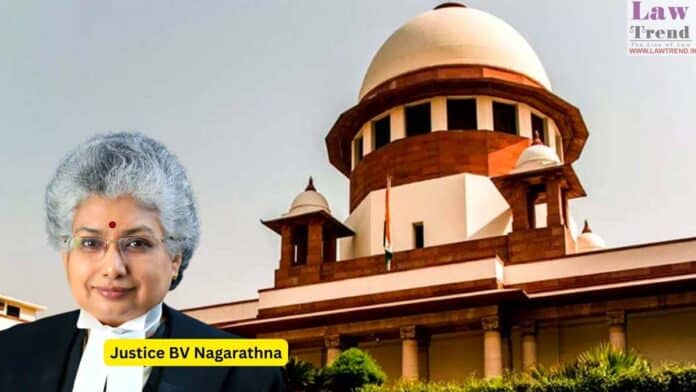Justice BV Nagarathna of the Supreme Court on Friday raised concerns over the potential impact of population-based delimitation on the political representation of southern states, stating that such a move could lead to reduced parliamentary representation for the South due to its declining birth rates compared to northern states.
The observation came during the hearing of a batch of petitions challenging provisions of the Surrogacy (Regulation) Act, 2021, before a bench comprising Justice Nagarathna and Justice Satish Chandra Sharma. The bench was hearing pleas by couples seeking to have a second child through gestational surrogacy despite already having a biological child.
During the proceedings, Justice Nagarathna remarked,
“In South you see, the families are shrinking. Births are coming down in South India… There are so many people in the North who are going on and on having children… There is an apprehension now if they have delimitation based on population, the number of representatives of the South will be reduced because of the population of North India.”
The bench questioned the necessity of opting for surrogacy when the couples already had healthy biological children. Advocate Mohini Priya, appearing for the petitioners, argued that they qualified under Rule 14 of the Surrogacy (Regulation) Rules, 2022, which permits gestational surrogacy in cases involving life-threatening medical conditions or repeated IVF failure.
Priya explained that both couples had tried IVF, but failed to conceive. She emphasised the couples’ desire to extend their families in the best interest of their existing children, stating, “This is simply in the best interest of the surviving child, and is a matter of personal choice for the couple.”
However, Justice Nagarathna expressed caution, observing that surrogacy should not become a trend or lifestyle choice:
“You see, film land celebrities already have two children. That person has two surrogacies and a third child. It should not become a fashion… Everybody wants to be one now. Nobody wants another.”
The Court also inquired whether one of the couples had opted for abortion after learning the sex of the foetus. Advocate Priya clarified that there was no sex-selective abortion, and the termination was medically advised due to a life-threatening condition.
“Mylords, there was no abortion in this case. She had to terminate the child because there was a life-threatening disorder that she suffered from… There is a genuine medical problem.”
Justice Nagarathna reiterated her population-related concerns, remarking,
“We are bursting with population literally. One child biologically, second child through surrogacy… If you have one child, why bring in another child. Look at the larger country’s interest.”
In response to Priya’s reference to China’s declining birth rates and state-encouraged two-child policy, Justice Nagarathna replied,
“That won’t happen in India. There are so many people in the North who are going on and on having children… That is an apprehension now if they have Delimitation based on population, the number of representatives of South will be reduced.”
The Court did not issue notice in the matter but ordered that the petitions be tagged with Writ Petition (Civil) No. 238/2024, which also challenges Rule 4(iii)(c)(II) of the Surrogacy (Regulation) Rules that bars couples from having a second child through surrogacy if the first child is healthy.
The Surrogacy (Regulation) Act, 2021, along with the 2022 Rules, regulates altruistic surrogacy in India and prohibits commercial surrogacy. Rule 4(iii)(c)(II) limits access to surrogacy for couples who already have one child, unless the child suffers from a life-threatening disorder.




